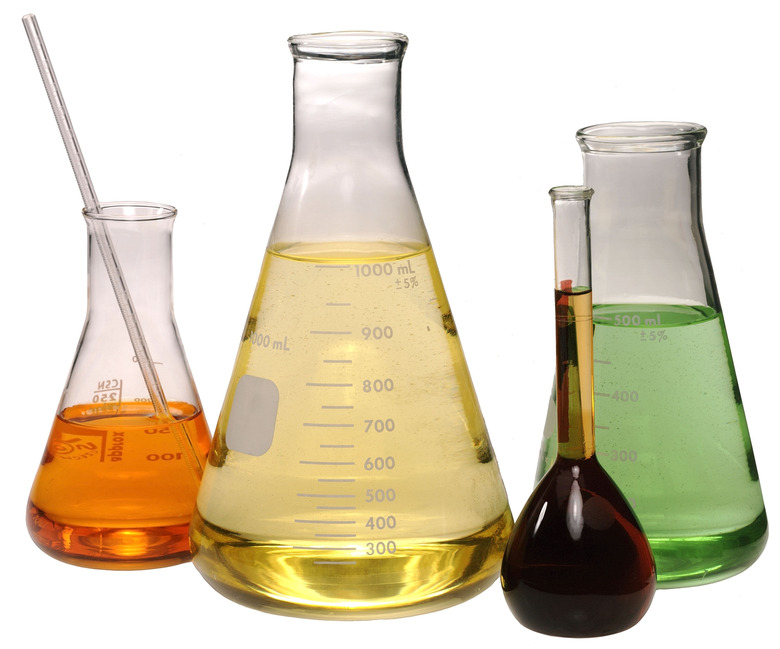How To Calculate Osmolarity Given Liters
Chemists often describe solutions in which one substance, known as the solute, is dissolved in another substance, known as the solvent. Molarity refers to the concentration of these solutions (i.e., how many moles of solute are dissolved in one liter of solution). One mole equals 6.023 x 10^23. Therefore, if you dissolve 6.023 x 10^23 glucose molecules in one liter of solution, you have a one molar solution. If you dissolve one mole of sodium chloride in one liter of solution, it is also a one molar solution. However, the osmolarity of the two solutions is not the same because sodium chloride separates into a mole of sodium ions and a mole of chlorine ions, while glucose does not.
Step 1
Determine the molar mass of the solvent. This is simply the sum of the atomic weights of all of its component atoms. For a sodium chloride solution, the weight is about 58.4. For glucose, the molar mass is about 180.2.
Step 2
Divide the mass of the solute by the molar mass to determine how many moles of solute you have. For example, 100 grams of sodium chloride equals 100/58.4, or about 1.71 moles. One hundred grams of glucose equals 100/180.2, or about .555 moles.
Step 3
Divide the number of moles of solute by the total volume of solution to calculate molarity. For example, if you dissolve 100 grams of sodium chloride and the final volume of your solution is 1.2 liters, 100 grams of sodium chloride equals 1.71 moles. Dividing this by the volume of solution gives you 1.71 / 1.2 = 1.425. That is a 1.425 molar solution, expressed as 1.425 M sodium chloride.
Step 4
Multiply molarity by the number of moles produced by dissolving one mole of solute. The result is the osmolarity of the solution. For non-ionic solutes, like glucose, one mole of solute usually produces one mole of dissolved particles. The osmolarity is the same as the molarity. One mole of sodium chloride, on the other hand, produces one mole of Na+ ions and one mole of Cl- ions. Multiply the molarity by two to calculate osmolarity. Some ionic compounds produce three or more particles when dissolved. CaCl2, for example, produces one mole of Ca++ ions and two moles of Cl- ions. Multiply the molarity of a CaCl2 solution by three to calculate its osmolarity.
Things Needed
- Laboratory scale
- Graduated cylinder
Cite This Article
MLA
Breslin, Andrew. "How To Calculate Osmolarity Given Liters" sciencing.com, https://www.sciencing.com/calculate-osmolarity-given-liters-10073703/. 24 April 2017.
APA
Breslin, Andrew. (2017, April 24). How To Calculate Osmolarity Given Liters. sciencing.com. Retrieved from https://www.sciencing.com/calculate-osmolarity-given-liters-10073703/
Chicago
Breslin, Andrew. How To Calculate Osmolarity Given Liters last modified March 24, 2022. https://www.sciencing.com/calculate-osmolarity-given-liters-10073703/
